| Description |
- Versatile connectors for audiovisual equipment
- Features a large, rectangular 21-pin connector
- Capable of transmitting composite video, RGB video, and stereo audio signals
- Enables simultaneous transmission of audio and video signals
- Convenient for connecting multiple devices with a single cable
- Vary in quality and construction materials
|
- Connector Conversion: BNC to RCA
- Compatibility: Professional to Consumer Devices
- Construction: Durable Materials
- Use Cases: Surveillance to Home Entertainment
- Easy Installation: Plug and Play
- Signal Quality: Maintained with High-Quality Cables
|
- Bridge Between SCART and HDMI
- Analog to Digital Conversion
- Legacy Equipment Compatibility
- Enhanced Video Quality
- Seamless Multimedia Integration
|
|
- Signal Conversion: BNC to HDMI
- Compatibility: Legacy to Modern Displays
- Resolution Support: SD, HD, and 4K
- Audio Integration: Some Models
- Easy Installation: Plug-and-Play
- Use Cases: Surveillance, Broadcast
- Signal Quality: Maintained with High-Quality Cables
|
- Converts S-Video signal to RCA (composite) video signal
- Allows connection of devices with S-Video output to devices with RCA input
- Typically features S-Video input and RCA (yellow) video output
- Useful for connecting DVD players, gaming consoles, or camcorders to older TVs or VCRs
- Does not transmit audio signals (additional cables may be needed for audio)
|
| Content |
| BNC-to-RCA adapters are connectors used to convert BNC (Bayonet Neill-Concelman) connections to RCA (Radio Corporation of America) connections, allowing compatibility between devices with different types of connectors. Here's a description of their features:
- Connector Conversion: BNC-to-RCA adapters enable the conversion of BNC connectors, commonly found in professional video equipment and surveillance systems, to RCA connectors, which are more prevalent in consumer electronics such as TVs, VCRs, and DVD players.
- Compatibility: These adapters allow devices with BNC outputs, such as CCTV cameras or professional video equipment, to be connected to devices with RCA inputs, such as TVs or monitors.
- Construction: BNC-to-RCA adapters typically have a female BNC connector on one end and a male RCA connector on the other end. They are constructed with durable materials to ensure reliable signal transmission.
- Use Cases: They are commonly used in various applications where compatibility between BNC and RCA connections is required. For example, they can be used to connect surveillance cameras to consumer-grade monitors or to integrate professional video equipment with home entertainment systems.
- Easy Installation: These adapters are simple to use and require no tools for installation. Users can easily plug the BNC end into the device's BNC output and connect the RCA end to the RCA input of the target device.
- Signal Quality: While adapters themselves do not affect signal quality, it's essential to ensure that the cables used with the adapters are of high quality to maintain signal integrity during transmission.
Overall, BNC-to-RCA adapters provide a convenient solution for bridging the gap between devices with BNC and RCA connectors, allowing for seamless connectivity in various audiovisual setups. | SCART-to-HDMI adapters serve as a bridge between older audiovisual equipment and modern HDMI-compatible devices. Here's a description:
SCART (Syndicat des Constructeurs d'Appareils Radiorécepteurs et Téléviseurs) connectors are prevalent in Europe and other regions, featuring a large, rectangular 21-pin connector. They support various video and audio signals, including composite video, RGB video, and stereo audio.
HDMI (High-Definition Multimedia Interface) is a digital interface widely used for high-definition video and audio transmission, found on modern TVs, monitors, and multimedia devices.
SCART-to-HDMI adapters typically have a SCART input on one end and an HDMI output on the other. They enable devices with SCART outputs, such as older DVD players or gaming consoles, to connect to HDMI-equipped displays or TVs.
These adapters convert the analog signals from the SCART source to digital HDMI signals, ensuring compatibility with modern devices and preserving or enhancing the video quality in the process.
SCART-to-HDMI adapters are convenient for upgrading older audiovisual setups to modern standards without replacing existing equipment. They provide a simple and effective solution for enjoying content from legacy devices on HDMI-enabled displays or TVs. |
|
BNC-to-HDMI adapters are connectors designed to convert BNC (Bayonet Neill-Concelman) video signals to HDMI (High Definition Multimedia Interface) signals. Here's a description of their features:
- Signal Conversion: BNC-to-HDMI adapters allow devices with BNC outputs, such as surveillance cameras or professional video equipment, to connect to devices with HDMI inputs, such as modern TVs, monitors, or projectors.
- Compatibility: These adapters bridge the gap between legacy BNC video equipment and modern HDMI displays, enabling seamless connectivity between different types of devices.
- Resolution Support: BNC-to-HDMI adapters typically support various resolutions, including standard definition (SD), high definition (HD), and even some higher resolutions like 4K, depending on the adapter's capabilities.
- Audio Integration: Some BNC-to-HDMI adapters also support audio transmission, allowing both video and audio signals to be converted and transmitted through the HDMI connection.
- Construction: These adapters are constructed with durable materials to ensure reliable signal transmission and longevity.
- Easy Installation: They are typically plug-and-play devices, requiring no additional drivers or software installation. Users can simply connect the BNC end to the device's BNC output and the HDMI end to the HDMI input of the target device.
- Use Cases: BNC-to-HDMI adapters are commonly used in surveillance systems, broadcast studios, and other professional video setups where older BNC equipment needs to be integrated with modern HDMI displays.
- Signal Quality: While adapters themselves do not affect signal quality, it's essential to ensure that the cables used with the adapters are of high quality to maintain signal integrity during transmission.
Overall, BNC-to-HDMI adapters provide a convenient solution for integrating legacy BNC video equipment with modern HDMI displays, offering compatibility and flexibility in various audiovisual setups.
|
An S-Video-to-RCA adapter is a simple device used to connect devices with different video output connections.
S-Video, short for Separate Video or Super Video, is an analog video signal that carries video data as two separate signals: luminance (Y) and chrominance (C). It provides better picture quality compared to composite video, which combines all video information into a single signal.
RCA (Radio Corporation of America) connectors, also known as composite connectors, are commonly found on older TVs and other audiovisual equipment. They typically consist of three connectors: one for video (yellow) and two for audio (red and white).
The S-Video-to-RCA adapter usually has an S-Video input on one end and RCA outputs (yellow for video, and possibly red and white for audio) on the other end. This allows you to connect a device with an S-Video output (like a DVD player or certain gaming consoles) to a device with RCA inputs (like an older TV or VCR).
When using an S-Video-to-RCA adapter, keep in mind that it only carries video signals. If you also need to transmit audio, you may require separate audio cables or another adapter depending on your setup.
|

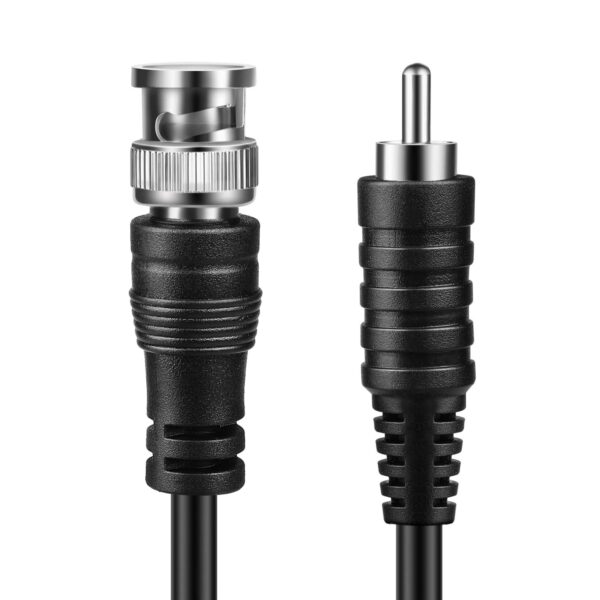
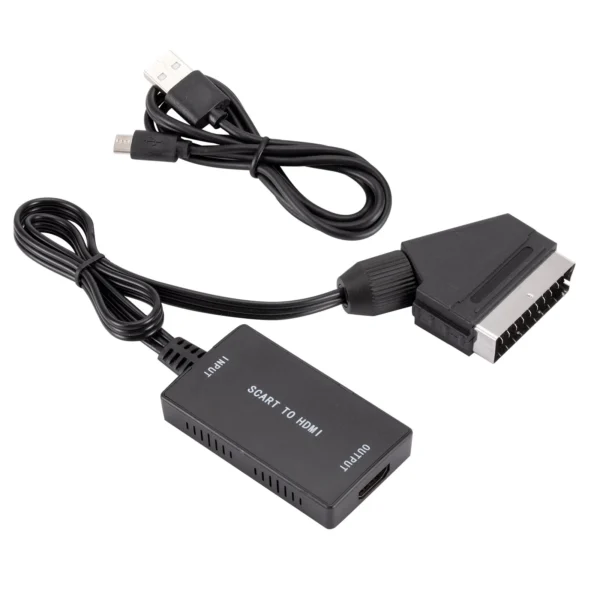
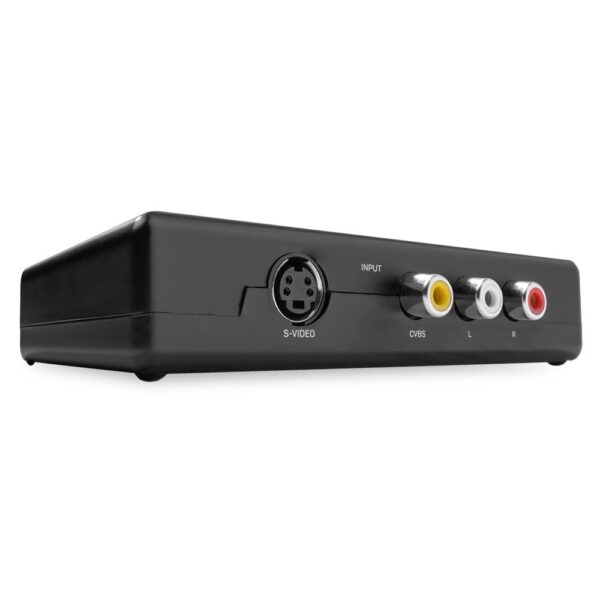
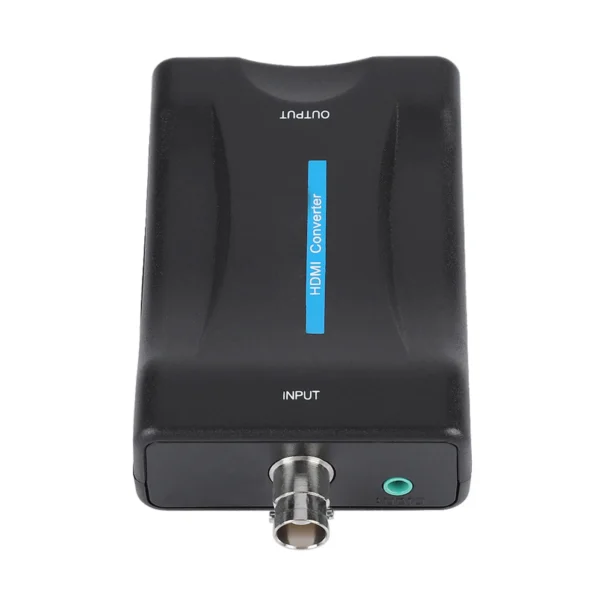
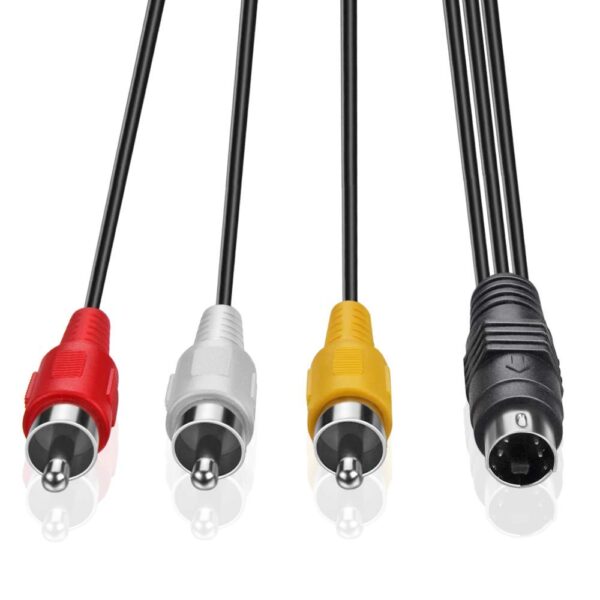


















Rating & Review
There are no reviews yet.